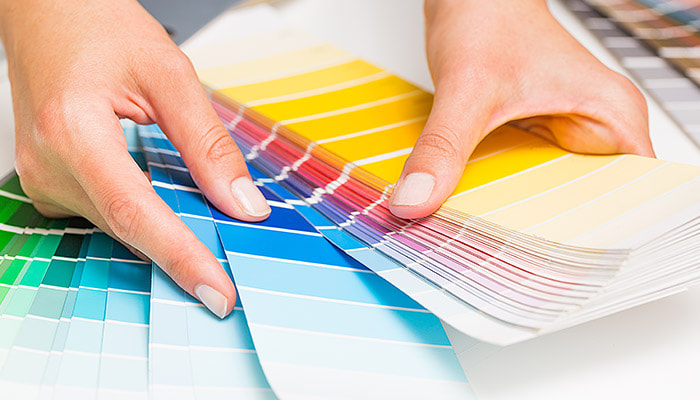|
Colour is wonderful thing. As a branding and marketing agency, there is one objective we want, no matter what the hue and that's consistency! Colours are different on your computer screen to what they are in a brochure and what they are when painted on your walls. To create consistency across all of the mediums, we use the international standard in colour matching; the Pantone Matching System or PMS. Not all colours are PMS colours though. Here is a list of the different types of colours and their most popular applications. CMYK.CMYK stands for Cyan, Magenta, Yellow and Black. This colour code is what we use when printing large runs of brochures, or large wall prints. It is used for high quality printing when you want the exact same colour today as you printed 3 years ago. We use this colour coding system for off-set printing and for large format printing. PMS.PMS stands for Pantone Matching System. It's the international colour matching standard. It is mainly used for one or two colour prints when off-set printing, or for spot printing. An example would be business stationery where your logo is on one single colour. We also use this for fabric print checking to ensure a shirt printed and sewn in China turns out to be what we design it as here in Australia. RGB.RGB stands for red, green and blue. It's the way colours are made digitally, or for screens. We use these colour codes for consistency when designing digital assets such as websites, social media posts and imagery for LED screens. Hex.A hex colour code is like shorthand for RGB. It is a digital colour code for use on websites and other digital applications. Paint colours.Depending on the client and application, we will often include a Dulux colour code also. This is for shop-fitters, painters, signwriters and builders to ensure any painted surface, such as an office wall has the right colour. 2 pack paint colour.Colour codes for spray painted cars, 3D lettering and some signage require a 2 pack painting process. This is different paint from wall paint. Vinyl colour.Self adhesive vinyl is a key medium when making signs. It can be printed with a CMYK colour code, however if large scale or multi-site signage is required, a pre-made colour will be more cost effective, and more stable over the long term. If this is the case, we also stipulate vinyl colour codes. We usually use Avery Dennison as the benchmark for colour coding. Consistency is key.A blue on your car is different to a blue on your iphone, which is different again to your blue work shirt. The key objective of stipulating colour codes upfront is to create as much consistency as possible from the car to the screen to the uniform and everywhere in between.
Comments are closed.
|
Archives.
June 2024
Tags.
All
|
Say g'day 0431 281 125
[email protected]
Brisbane Office
269 Earnshaw Road Northgate Qld 4013
PO Box 288 Kedron Qld 4031
Townsville Office
45 Ingham Road Townsville Qld 4810
PO Box 6237 Townsville Qld 4810
[email protected]
Brisbane Office
269 Earnshaw Road Northgate Qld 4013
PO Box 288 Kedron Qld 4031
Townsville Office
45 Ingham Road Townsville Qld 4810
PO Box 6237 Townsville Qld 4810
©Grey and Grey. All rights reserved.
ABN 45 650 927 772
We acknowledge the Turrbal, Chepara-Yugarapul, Wulgurukaba and Bindal people; the traditional custodians of country where we operate our business. We pay our respects to their elders.
ABN 45 650 927 772
We acknowledge the Turrbal, Chepara-Yugarapul, Wulgurukaba and Bindal people; the traditional custodians of country where we operate our business. We pay our respects to their elders.


